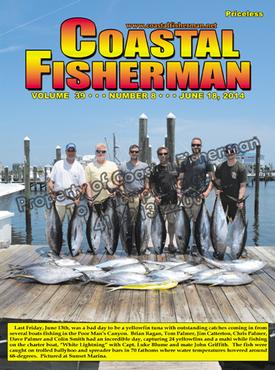


Article by Capt. Steve Katz
 Shore Power
Shore Power
The supply of standard electrical power to boats has become very commonplace and necessary for boats of all sizes. Some boats can use as much power as a small house!
Most boats have a reverse polarity indicator on the interior electrical panel. This is required by ABYC on all boats with shore power unless another type of power safety system is installed. The purpose of this indicator is to let the people aboard know there is a potentially unsafe condition aboard before you turn the power on. If the reverse polarity alarm lights, you should not switch on the electrical power to the boat and should investigate the cause.
Reverse polarity is a condition where the black and white alternating current power wires are backwards in the system. Most modern electrical outlets have three different shaped holes to allow a plug to be inserted only one way. This assures appliances and devices operate safely and properly. If the polarity is reversed, the “hot” wire can contact the neutral or ground system, allowing electricity to flow into parts of an appliance or wiring system that you can easily touch, such as the case of a coffee maker or into the ships bonding system, “electrifying” metal hardware on the boat.
In the shore power system, the black wire is the “hot” or line wire and usually measures 120 volts when tested to the neutral and carries the current. The white wire is the neutral wire, sometimes referred to a return wire. This white wire carries the return current back to the power station. The green wire is the ground, usually connected to the earth at or near the source of power. This green wire does not normally carry current – but can in the event in a malfunction, providing a safe path for the electricity. There is often a fourth supply wire that is red in color. This wire is also “hot”, providing 120 volts when tested to the neutral wire. When the black and red wire are tested against each other, they will show approximately 240 volts.
The purpose of the green ground wire is to provide a safety path for electricity in the event of a circuit malfunction. If there was a problem with an appliance, wire or other electrical device, the green wire can safely carry the electricity away or cause a circuit breaker to trip, reducing the risk of an electrical shock to people.
Many larger marine appliances and devices operate on 240 volts, such as water heaters, air conditioning, stoves, water makers and battery chargers. Supplying this amount of power to your boat requires 4 wires; red, black, white and green. This is the standard set-up for the shore power cord, often referred to as 50A 125/250V. The 50A refers to 50 Amps of 250V power across the red and black wires. The 125/250V referees to the voltage across the wires, approximately 250 volts total or 125 volts for each of two “hot” wires.
Large boats that do not require as much electricity may use a less common 50A 125V power cord that has three wires; this configuration is not very popular and found most often on older boats. For mid-sized boats, the most popular configuration is the 30A 125V power cord. This 30 Amp power cord has three wires and supplies a maximum of 30 amps of 120 volts power to the boat. Often a second 30 Amp power cord is added if additional power is needed.
There are two newer shore power cords that are becoming more poplar and can be seen when walking the docks. The Easily Engaged Locking (EEL) System is made by Marinco. They have eliminated the threaded sealing ring and created a one-handed locking system to attach the cord to the boat or dock receptacle. This EEL has a better waterproof seal using their new jaw clamp, an integral LED light and an LED power indicator so you’ll know that power is flowing through your cord. This cord is compatible with existing power inlets.
The SmartPlug is an upgrade to the conventional shore power configuration, it has larger electrical connector pins, so it is less likely to overheat, and if it does, there is an internal thermostat that cuts power at the first sign of overheating. The SmartPlug also has triple weatherproof seals to keep the insides dry, a multi-point locking system for a solid, sealed connection, and stainless steel external hardware. Its unique shape only allows you to insert it one way, so there’s no chance of misalignment. The boatside inlet mounts using the same four-hole pattern as the traditional shore power cord but is NOT compatible with traditional power inlets.
Now that we know how the system works, we can review the maintenance of the shore power cord. The most common problem is overheating the connections, either the boat or dock connection points. Overheating generally results from one or two conditions: corrosion on the metal blades or contacts, or bad connections between the plug/receptacle and the connected wires. If the end of your cord gets dropped into saltwater, and isn’t thoroughly cleaned and dried, the contacts corrode, causing a poor electrical connection and overheating. Marinco recommends that a power cord dropped in saltwater be rinsed with freshwater, allowed to dry and sprayed with a moisture displacement product/light lubricant.
A regular inspection and maintenance of your shore power cord and receptacles will help provide a long lasting and safe system.
Captain Steve Katz is the owner of Steve's Marine Service and holds NMEA MEI, AMEI, NMEA2000 certificates, ABYC Master Technician certification and factory training from many manufacturers.